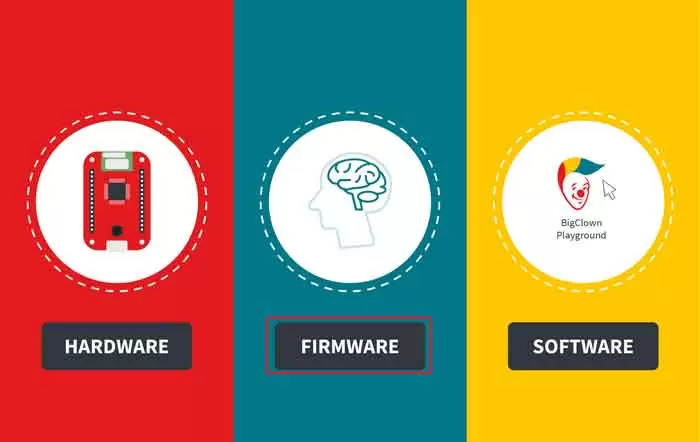Look at your system and count the number of gadgets. Their number can easily exceed 5; you should probably replace them? It is easy to update an old program and install a new version by simply clicking a button. New versions of each program may be released within a few months.
In addition to software, hardware must also be upgraded. Sometimes, depending on the performance of software, it may be necessary to change the way hardware components work. But replacing hardware components is not as easy as replacing software. This is where the firmware comes in. Its update eliminates the need to replace hardware.
What is firmware?
Firmware is a software program usually stored in a hardware device’s flash ROM (read-only memory) and provides instructions on how to operate the device. Flash ROM Unlike ROM, it can be rewritten because it is a flash memory. The firmware update only happens when the developer has released it.
When installing a new operating system (essentially software), you may need to update It related to some hardware such as hard disks and video cards and… Not always compatible, sometimes manufacturers release a firmware update to increase the performance of hardware components or reduce power consumption.
What happens without firmware?
Every gadget on desktops, laptops, or smartphones has multiple firmware that holds them.
When starting the computer, a special firmware on the motherboard helps the system find the operating system and provides it with startup instructions. Without firmware, the motherboard does not know how to detect an existing hard drive or graphics card. The firmware even controls the operation and communication of disks or SSDs with other system parts. Each starting part of the video adapter, network adapters (wired and wireless), USB controller, and Bluetooth radio have a separate It. Mice, keyboards, printers, webcams, and monitors also have firmware running.
If hard disks do not have It, they do not know when to spin, when to stop, or how fast to spin. The wireless network card never knows how to use a particular radio frequency to connect to WiFi. We often think of a hardware device as a system made of only hardware and can work on its own. However, the truth is that almost no modern hardware device can work without this special software written directly on them.
When should the firmware be updated?
Troubleshooting or security: Various security risks are a negative aspect of technological advances that put devices at risk. Therefore, device manufacturers need to upgrade their security features from time to time.
Add feature: Provide the user with a better experience and interaction by adding new features.
Improved performance: Improved firmware performance leads to improved CPU performance. All device accessories should work together, so delays are reduced.
Different types of firmware
The firmware varies depending on the hardware of the devices. It is available on computer motherboards (also called BIOS or UEFI) on hard drives, SSDs, CD / DVD / Blu-Ray drives, network cards, routers, access points, and even gaming mice and keyboards. There is also. It’s not just computer-based devices that have It. Every machine that can do useful work has firmware, such as a TV, washing machine, and even vehicles.
Compare firmware, device drivers, and software.
Software device driver firmware
It is a software program that activates the device’s capabilities without the need to install additional software. This software program enables the communication between the operating system and the hardware.
A broad term for defining a set of instructions enables a device to operate in specific ways.
Types of firmware include BIOS, EFI, etc. It is for hardware, such as printer and graphics drivers, and includes a variety of software such as applications, sharing software, systems, etc. There are no categories for firmware.
They are generally divided into kernel mode and user mode, including various categories such as applications, computer programming tools, and. It is usually written in low-level languages. It is usually written in a low-level language. All types of software are written in both low-level and high-level languages. Not for user interaction. Not for user interaction. To interact with the user.
Gives life to hardware. Ensures smooth operation of the device. Adds capabilities to the device. It usually takes up a few kilobytes. All kinds of software take up a few kilos to a few gigabytes of space.
Firmware is difficult to replace. Replacing a driver is difficult. Software replacement is not a hassle.

